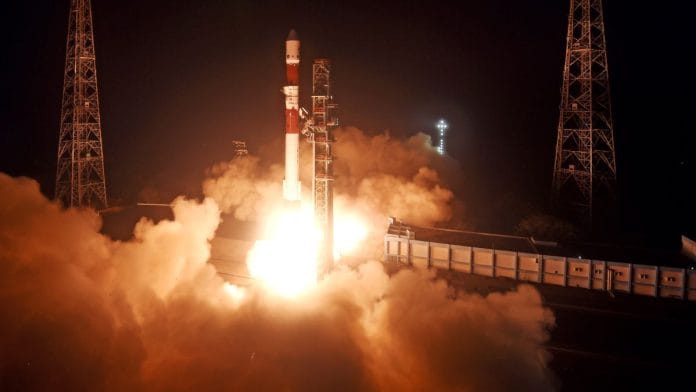New Delhi: On 7 January, the Indian Space Research Organisation (ISRO) is set to conduct a key experiment, SpaDeX, showcasing its indigenous in-space docking and undocking technology that will be used for spacecraft rendezvous. It will pave the way for future Indian space missions such as satellite servicing, space station operations, and interplanetary missions.
“In-space docking technology is essential when multiple rocket launches are required to achieve common mission objectives. Through this mission, India is marching towards becoming the fourth country in the world to have space docking technology,” ISRO says on its website.
A successful docking demonstration will add India to an elite list—the US, Russia, the European Union and China—to have performed docking in space.
ThePrint explains how SpaDeX, or Space Docking Experiment, will be undertaken and its significance in shaping future missions.
Placed in low-Earth orbit
Two small satellites—SDX01 (Chaser) and SDX02 (Target)—were successfully launched onboard India’s PSLV-C60 rocket and placed into low-Earth circular orbit late on Monday.
The two spacecraft are equipped with the indigenously developed Bharatiya Docking System (BDS), which will allow them to join together as part of the docking manoeuvre next week.
They weigh around 220kg each and are androgynous in nature, which means that either crafts can act as a Chaser—the active spacecraft—during docking. They are equipped with solar panels, lithium-ion batteries, and a robust power management system.
Senior ISRO scientists told ThePrint that the two satellites will be launched one after the other from the launch vehicle, with a small difference in velocity.
On 7 January, they are expected to be at a distance of about 20 km from each other before the experiment begins. This distance will then be closed and the docking manoeuvre will then be attempted.
“Simply put, it is like two cars being driven in parallel at the same speed. You can exchange items between them,” Jitendra Singh, the Union minister of state for science and technology and space, told ThePrint.
How docking will take place
First, ISRO will use the propulsion systems of one satellite to capture its drift and control the relative positions of the two satellites, ensuring that they maintain the 20-km distance between them.
Once the two spacecraft are arrested at the same distance, they will be in orbit at the same speed. Before the manoeuvre is attempted, the space agency will first ensure that the systems have been charged with ample solar power, required to carry out the docking procedure.
Next, ISRO will initiate the “drift” of the two spacecraft. The distance between the two bodies will gradually be reduced.
Once the distance is reduced to 5 km, the inter-satellite radiofrequency link between the two satellites will be activated so that the spacecraft can exchange position and attitude information. At a 1.5-km distance, the docking sequence will begin.
The final stage will involve the Chaser craft moving closer to the Target craft. The latches on both satellites will then grab connect and finally become a single unit.
Once the docking is complete, the crafts will display power transfer capabilities confirming a connection—a stream of electricity between the two satellites will turn on a power heater.
This entire manoeuvre is expected to last 15 minutes.
Crucial for future missions
The rendezvous, docking and undocking technologies will enhance ISRO’s operational flexibility and help expand mission horizons, becoming the stepping stone for more advanced space expeditions such as the lunar mission, Chandrayaan-4, and the planned space station, Bharatiya Antariksh Station.
“SpaDeX will serve as a milestone in advancing India’s capabilities in space docking, a critical technology for future space missions including satellite servicing, space station operations, and interplanetary missions,” the space agency’s mission document said.
It said that the primary objectives of SpaDeX are to develop and demonstrate the technology for rendezvous and docking using two small spacecraft and to demonstrate controllability in the docked condition, showing the potential for extending the life of the target spacecraft.
“Additionally, the mission aims to test power transfer between the docked spacecraft. The secondary objectives include post-docking activities where the spacecraft will perform independent payload operations,” it said.
(Edited by Sanya Mathur)






